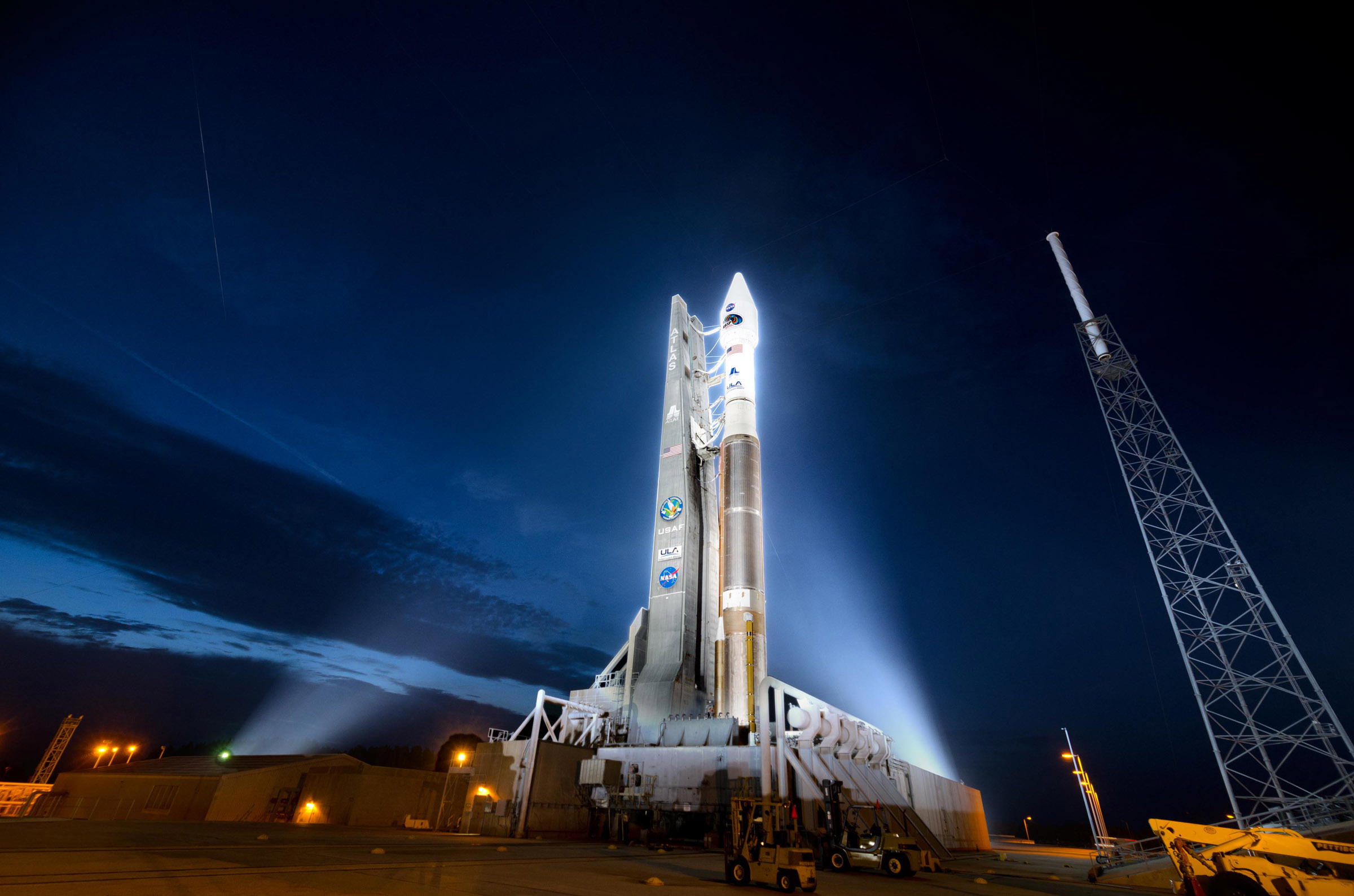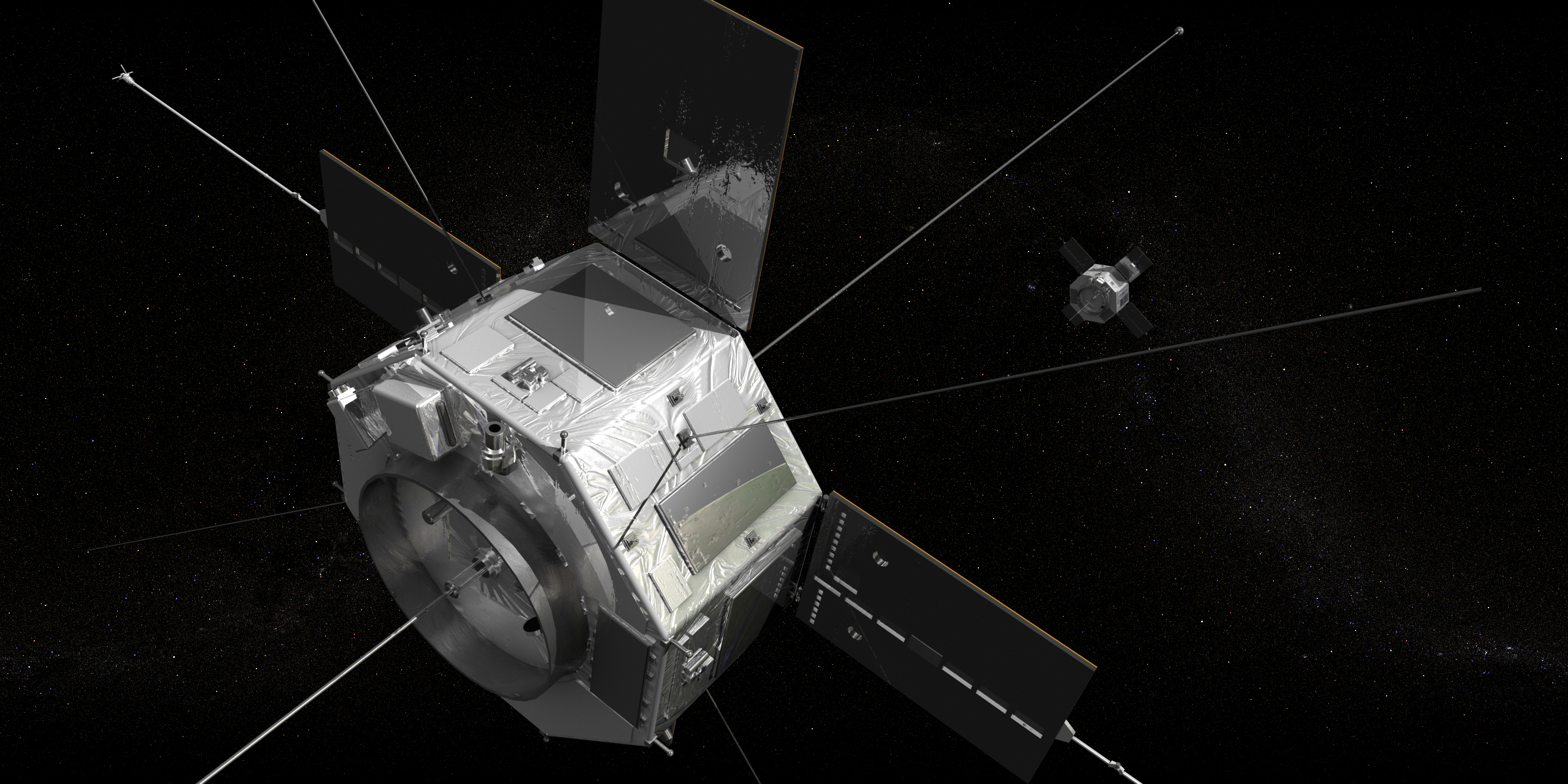NASA Postpones Launch of Space Radiation Probes by 24 Hours

This story was updated at 10:13 a.m. ET.
NASA postponed launching two spacecraft into the harsh radiation belts around Earth Friday (Aug. 24) due to an apparent malfunction with a tracking system that monitors the mission's rocket.
The tracking beacon glitch popped up before dawn on Friday, late in the mission's final countdown, prompting NASA to delay the launch of its twin Radiation Belt Storm Probes from Florida's Cape Canaveral Air Force Station by at least 24 hours. The unmanned Atlas 5 rocket carrying the two satellites is now slated to blast off at 4:07 a.m. EDT (0807 GMT) on Saturday, Aug. 25.
NASA launch director Tim Dunn said the launch countdown was going well until his team spotted a frequency drift in the tracking beacon used by the Air Force's Eastern Range to track the Atlas 5 rocket after liftoff.
"That's a mandatory safety item so that we could track the vehicle in flight," Dunn said in a NASA broadcast after the delay. "It certainly was a situation we wish we didn't have, but we wanted to err on the side of conservatism." [Photos: Inside NASA's Radiation Belt Mission]
Dunn said Saturday and Sunday are still good days to launch the space radiation mission. There is a 60 percent chance of favorable weather for Saturday's launch attempt. NASA initially planned to launch the two satellites on Thursday, but delayed the flight to Friday to clear up a separate technical concern on the Atlas 5 rocket.

The $686 million Radiation Belt Storm Probes mission is a two-year project to study the radiation environment around Earth in unprecedented detail. The twin spacecraft are designed to fly in formation to explore the Van Allen Belts of radiation that encircle the Earth.
Get the Space.com Newsletter
Breaking space news, the latest updates on rocket launches, skywatching events and more!
The Van Allen Belts are two donut-shaped zones of radiation around Earth. They were first discovered in 1958 by scientist James A. Van Allen and his team using data from the first American satellite Explorer 1. The first belt stretches from the top of Earth's atmosphere out to about 4,000 miles (6,437 kilometers) above the planet. The second radiation belt extends from about 8,000 miles (12,874 km) to more than 26,000 miles (41,842 km) above Earth.
Scientists hope the Radiation Belt Storm Probes mission will help them solve the mystery of how the radiation is created and behaves inside the Van Allen Belts, as well as the regions' role in space weather events— such as strong solar flares from the sun — that can pose a danger to satellites and astronauts in orbit.
The two Radiation Belt Storm Probes are solar-powered and nearly identical. The octagon-shaped satellites are about 6 feet wide (1.8 meters) and just over 4 feet tall (1.3 m). They each carry a set of five instrument suites to study Earth's radiation belts.
When the two spacecraft launch this weekend is determined on the nature of today's tracking beacon problem, Dunn said. Launch team engineers are working to determine whether or not they will have to adjust hardware on the rocket itself, or only on its launch support structures, he said.
"We don't launch unless we're absolutely certain," Dunn added.
You can follow SPACE.com Managing Editor Tariq Malik on Twitter @tariqjmalik and SPACE.com on Twitter @Spacedotcom. We're also on Facebook & Google+.
Join our Space Forums to keep talking space on the latest missions, night sky and more! And if you have a news tip, correction or comment, let us know at: community@space.com.

Tariq is the Editor-in-Chief of Space.com and joined the team in 2001, first as an intern and staff writer, and later as an editor. He covers human spaceflight, exploration and space science, as well as skywatching and entertainment. He became Space.com's Managing Editor in 2009 and Editor-in-Chief in 2019. Before joining Space.com, Tariq was a staff reporter for The Los Angeles Times covering education and city beats in La Habra, Fullerton and Huntington Beach. In October 2022, Tariq received the Harry Kolcum Award for excellence in space reporting from the National Space Club Florida Committee. He is also an Eagle Scout (yes, he has the Space Exploration merit badge) and went to Space Camp four times as a kid and a fifth time as an adult. He has journalism degrees from the University of Southern California and New York University. You can find Tariq at Space.com and as the co-host to the This Week In Space podcast with space historian Rod Pyle on the TWiT network. To see his latest project, you can follow Tariq on Twitter @tariqjmalik.









